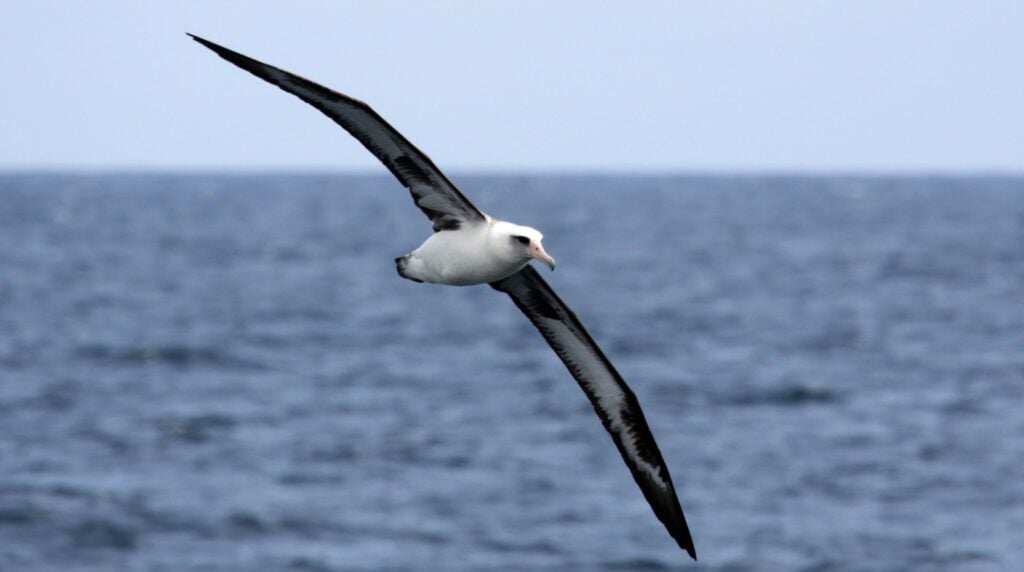The albatross is a massive seabird with a wingspan of up to 11 feet across. It is a magnificent glider and spends almost all its time at sea, only coming ashore to breed. But do you know how long they can soar this long?
While flying across the ocean, the albatross rarely flaps its wings. It carves through the air using “dynamic soaring” and “slope soaring,” gaining velocity from wind gradients. It can travel nearly 1,000 kilometers or 620 miles per day without using a single wing flap.
How Does Wingspan Help with Soaring?
A Wandering Albatross or Diomedea exulans has a wingspan of up to 12 feet, making it the largest extant bird on Earth in terms of wingspan. This allows the wandering albatross to fly 500 miles daily and maintain speeds of nearly 80 mph for eight hours without flapping its wings.
Part of the secret is the bird’s locking elbow joints, which allow it to keep its wings extended for long periods with no energy cost from its muscles.
Furthermore, the birds have mastered dynamic soaring, which involves flying along a constantly curving path to extract energy from the wind velocity gradient, also known as wind shear. And, because albatrosses live in areas with consistently strong winds, dynamic soaring gives them access to an unlimited external energy source, according to one study.
Engineers have long attempted to replicate the impressive flying abilities of the albatross with aircraft. (Source: Tree Hugger)
How Long Do Albatrosses Spend Flying?
Albatrosses may spend a year or more at sea after they fledge, most of which is spent flying. Because touching down in the water puts them at risk of shark attacks, they only do so briefly to feed. It is widely assumed that albatrosses can sleep while flying. Although evidence of that behavior is still lacking, it has been observed in a closely related frigate. (Source: Tree Hugger)
What is the Life Expectancy of an Albatross?
All albatrosses are long-lived birds capable of surviving for decades. Some people live well past the age of 50. The best-known example is Wisdom, a Laysan Albatross or Phoebastria immutabilis banded by scientists in 1956 at Midway Atoll.
Wisdom returned to Midway for more than a half-century, raising several dozen chicks. Wisdom was 70 years old and still breeding in 2021, making her one of the oldest known breeding birds. (Source: Tree Hugger)
Mating Amongst Albatrosses
Albatrosses are life partners. They form long-term bonds with one partner and have the lowest divorce rate of any bird; mated pairs rarely split up until one dies.
These couple bonds do not always adhere to the human definition of romance. Albatross pairs spend very little time together, only briefly meeting at their breeding grounds until their egg is laid. They then alternate between incubating the egg and foraging for food. Both birds eventually need to hunt for food to feed their growing chick.
After their chick hatches after 165 days, the pair splits for the rest of the year, reuniting only when it’s time to breed again. They are socially monogamous, which means they bond with a single partner but occasionally reproduce outside of that relationship. (Source: Tree Hugger)
Image from U.S.Fish&Wildlife Alaska
